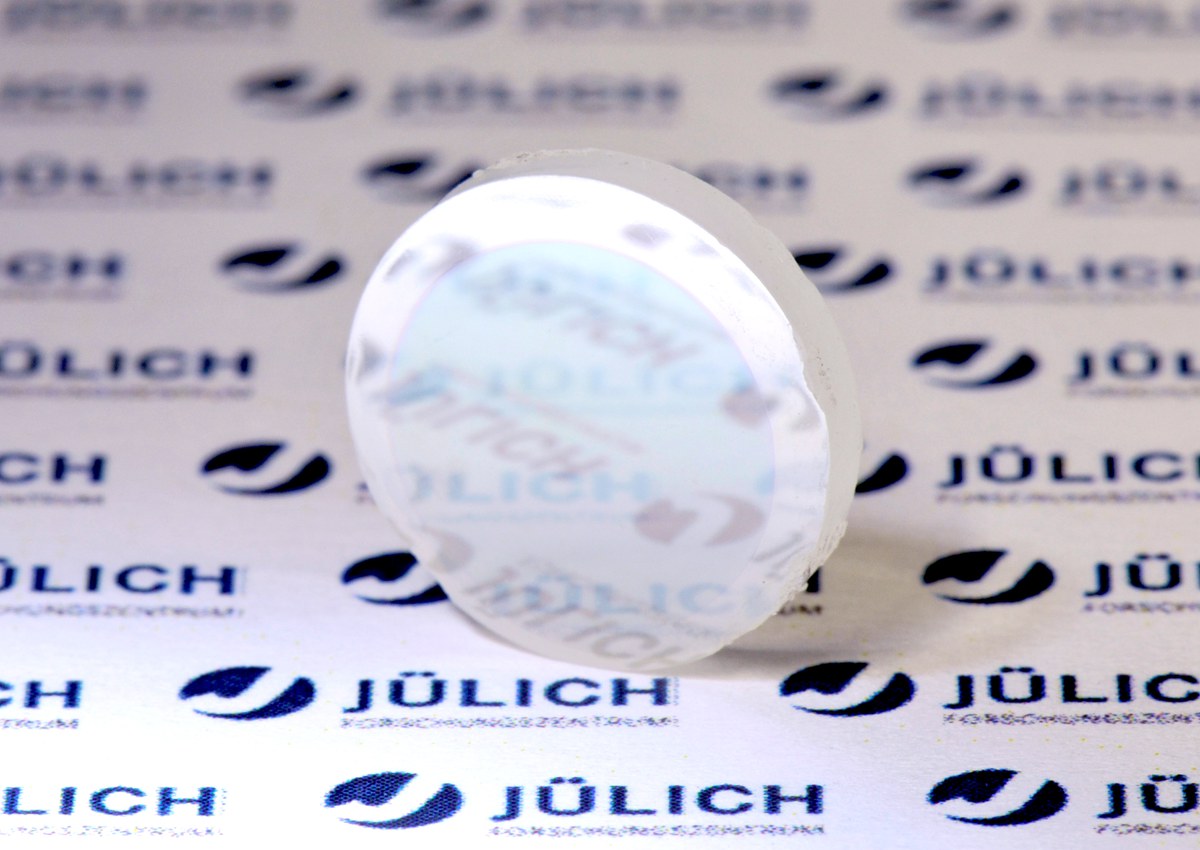Stronger Than Gorilla Glass
Jülich, 26 November 2018 – They are harder than conventional glass and exceptionally resistant to heat and corrosive chemical substances: transparent ceramics are considered a promising alternative to glass-based materials. Like all ceramics, however, they are highly susceptible to fracture. To combat this, Jülich scientists are working on an innovative coating technique that enhances the mechanical and optical properties of transparent ceramics in a targeted manner. They have now succeeded in doubling the fracture toughness of these ceramics. The results of their study have been published in the peer-reviewed journal Scientific Reports.
Thanks to their exceptional stability, transparent ceramics can be used in areas where the use of conventional glass is limited, for example in scratch- and heat-resistant windows for industrial high-temperature furnaces. Moreover, as they are transmissive to short- and long-wave radiation, they are well suited for use in lenses for ultraviolet lithography or in sensors for infrared imaging. They are also of interest for cameras and smartphones – as a material for optical lenses. Their high refractive index means that they can focus light more effectively. As a result, lenses made of this material can be fabricated thinner than usual, allowing camera components to be miniaturized more easily.
Problems caused by the smallest surface defects
Transparent ceramics have unique properties and a unique range of possible applications – yet they are very difficult to produce. The production process requires high temperatures and precisely defined conditions, as otherwise defects can occur in the material. "For one thing, this makes them more expensive to produce than glass or glass-ceramics," explains Prof. Dr. Olivier Guillon, head of Materials Synthesis and Processing at Jülich’s Institute of Energy and Climate Research. "For another, as a result of these defects, their strength is often far below the limits that are theoretically possible." Material defects near the surface are particularly critical. "Even the tiniest irregularities in the surface can lead to cracks, which then expand under certain stresses – bending, for example – causing the component to fracture."
An innovative approach could solve this problem: functional coatings. "Our goal was to transfer the concept of strengthened glass to transparent ceramics for the first time," says Guillon. "Similar to the idea behind Gorilla Glass, which is widely used in mobile phones, we aimed to stabilize the surface of transparent ceramics by applying a thin coating of another material. This technique, known as 'tempering', can be expected to significantly improve both the mechanical and optical properties of these ceramics."
Ultrathin protective coating lends stability
A group led by Dr. Martin Bram has now demonstrated the functionality of this promising concept. For their study, the scientists chose a transparent ceramic made from zirconia. They heated the surface and then used vapour deposition to coat it with an ultrathin layer of yttria – measuring less than a micrometre. "Due to the different thermal properties of the two materials – zirconia expands more than yttria when heated, and shrinks more when cooled – a high degree of compressive stress is generated in the coating during cooling," explains Bram. "This stress causes the surface of the component to compress, effectively preventing cracking. As a result, the component is more stable and its surface more resistant to scratches."
At the same time, the yttria coating enhances the optical properties of the transparent ceramic. It reduces light reflections on the surface, which allows more light to pass through.
"We can influence and modify the properties of the material in a very targeted way," says Bram. "This opens up a whole range of enhancements for optical lenses, for example. The ceramic’s higher refractive index makes it possible to miniaturize camera components. The functional coating increases mechanical stability and reduces reflection on the surface, allowing more light to pass through the lens. This shortens the required exposure times."

Suitable for industrial production
The scientists succeeded in demonstrating that their method doubles or even triples the fracture toughness of transparent ceramics, achieving values far higher than the fracture toughness of tempered glass. In addition, depending on the choice and combination of materials, coating thicknesses, and process parameters, the mechanical and optical properties of the ceramics can be maximized in a specific manner. In principle, the technique can be applied as an aftertreatment to finished workpieces, requires a minimal amount of material, and only takes a matter of hours to perform, making it suitable for industrial mass production.
The Jülich scientists’ study is still a proof of concept at present, yet they are optimistic about its future potential: "Our results clearly indicate that the technique can be applied to real-life applications."
Original publication:
Increasing Fracture Toughness and Transmittance of Transparent Ceramics using Functional Low-Thermal Expansion Coatings, Marc Rubat du Merac, Martin Bram, Jürgen Malzbender, Mirko Ziegner, Marcin Rasinski & Olivier Guillon,
Scientific Reports, volume 8, Article number: 15644 (2018), DOI:10.1038/s41598-018-33919-5
(open access)
Further information:
Institute of Energy and Climate Research – Materials Synthesis and Processing (IEK-1)
Contact:
PD Dr. Martin Bram
Head of the Particle-Based Processing and Sintering team/Christian Doppler Laboratory
Institute of Energy and Climate Research –
Materials Synthesis and Processing (IEK-1)
Tel.: +49 2461 61-6858
E-Mail: m.bram@fz-juelich.de
Prof. Dr. Olivier Guillon
Director at the Institute of Energy and Climate Research –
Materials Synthesis and Processing (IEK-1)
Tel.: +49 2461 61-5181
E-Mail: o.guillon@fz-juelich.de
Press contact:
Dr. Regine Panknin
Corporate Communications
Tel.: +49 2461 61-9054
E-Mail: r.panknin@fz-juelich.de
